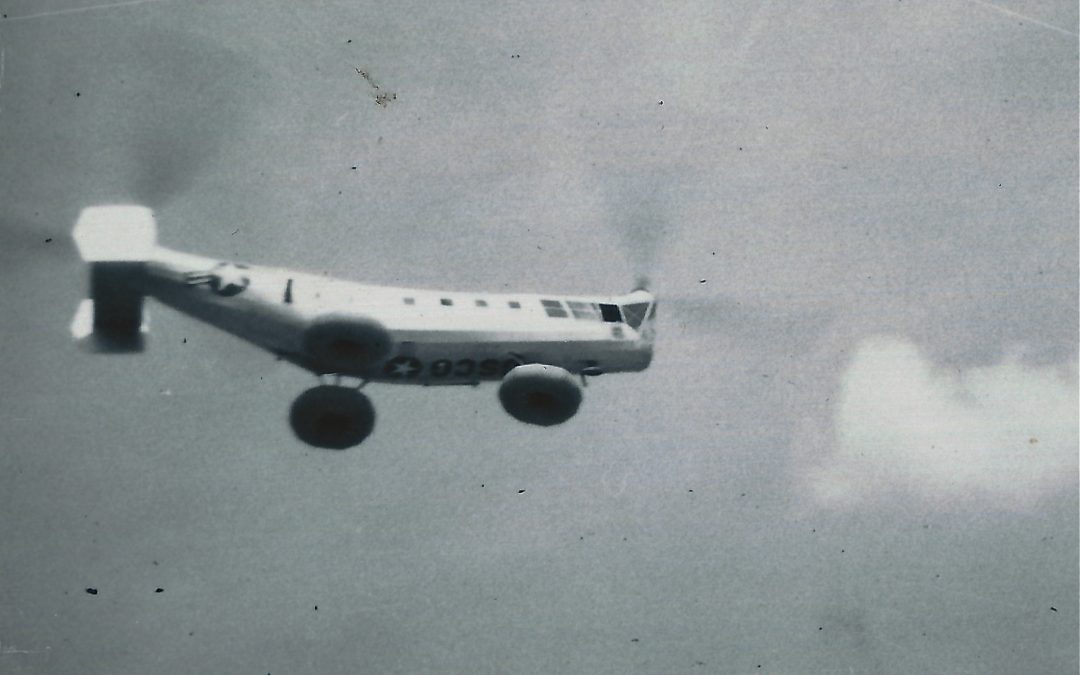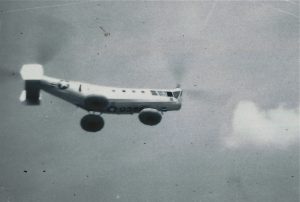USCG Piasecki HRP-1 dated 4 September 1949. From the CG aviation history website:
The Coast Guard acquired three HRP-1 twin-rotor helicopters from the Navy beginning in November 1948. All three helicopters were stationed at Coast Guard Air Station Elizabeth City along the North Carolina coast. At least one was assigned to the Rotary Wing Development Unit based out of Elizabeth City. Here they participated in numerous experiments, including on-the-water landings with newly invented flotation gear* and the testing of various types of hoists, rescue baskets, and rescue harnesses…
…Many of the current Coast Guard helicopter rescue procedures in use today owe their development to Erickson and the HRP experiments he, along with the men of the Coast Guard’s Rotary Wing Development Unit, conducted in 1949 and 1950. **
*The floats pictured here were made of nylon and folded neatly around the wheels until the pilot deployed them by pulling a cord. They took about 90 seconds to inflate fully and were designed to facilitate landing on snow, ice, water, “tundra”, or swampland.
**A few days after this photo, a USCG Piasecki HRP-1 from Elizabeth City, piloted by LT F.W. Brown and LT (jg) J. J. Lamping, participated in the rescue of Navy LT Brooke Montgomery. Operating out of NAS Oceana, Montgomery bailed out about 45 miles East of Nags Head, NC after the engine of his Bearcat caught fire at 15,000 ft. After a few hours of being harassed by sharks while sitting in his life raft, he was rescued via a hoist lowered by the HRP. Sadly, Brooke Montgomery was later killed in mid-air off Pt Mugu in 1956. His father was a retired Vice Admiral who served as the Commander, Naval Air Forces Pacific.



Recent Comments